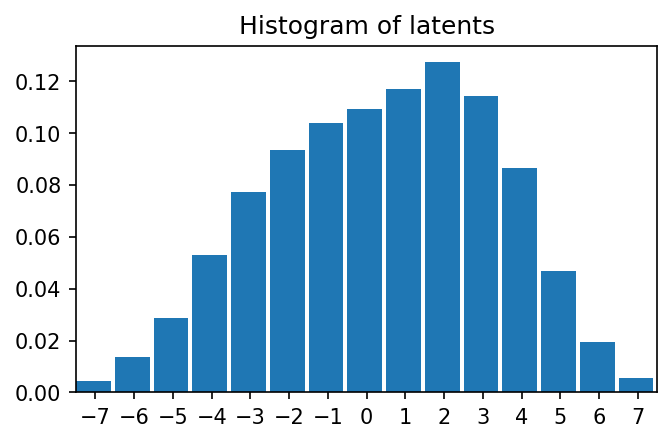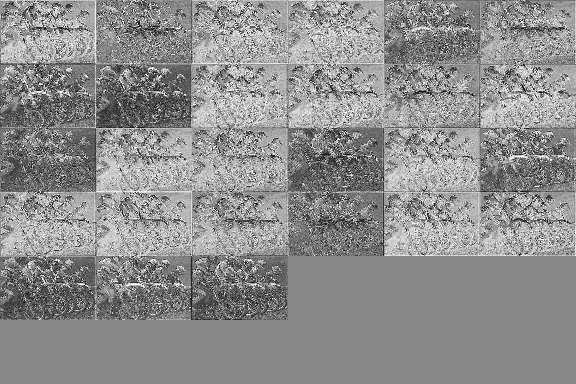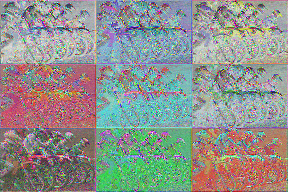datasets:
- danjacobellis/LSDIR_540
Wavelet Learned Lossy Compression (WaLLoC)
WaLLoC sandwiches a convolutional autoencoder between time-frequency analysis and synthesis transforms using CDF 9/7 wavelet filters. The time-frequency transform increases the number of signal channels, but reduces the temporal or spatial resolution, resulting in lower GPU memory consumption and higher throughput. WaLLoC's training procedure is highly simplified compared to other $\beta$-VAEs, VQ-VAEs, and neural codecs, but still offers significant dimensionality reduction and compression. This makes it suitable for dataset storage and compressed-domain learning. It currently supports 1D and 2D signals, including mono, stereo, or multi-channel audio, and grayscale, RGB, or hyperspectral images.
Installation
- Follow the installation instructions for torch
- Install WaLLoC and other dependencies via pip
pip install walloc PyWavelets pytorch-wavelets
Pre-trained checkpoints
Pre-trained checkpoints are available on Hugging Face.
Training
Access to training code is provided by request via email.
Usage example
import os
import torch
import matplotlib.pyplot as plt
import numpy as np
from PIL import Image, ImageEnhance
from IPython.display import display
from torchvision.transforms import ToPILImage, PILToTensor
from walloc import walloc
from walloc.walloc import latent_to_pil, pil_to_latent
class Config: pass
Load the model from a pre-trained checkpoint
wget https://hf.co/danjacobellis/walloc/resolve/main/RGB_Li_27c_J3_nf4_v1.0.2.pth
device = "cpu"
checkpoint = torch.load("RGB_Li_27c_J3_nf4_v1.0.2.pth",map_location="cpu",weights_only=False)
codec_config = checkpoint['config']
codec = walloc.Codec2D(
channels = codec_config.channels,
J = codec_config.J,
Ne = codec_config.Ne,
Nd = codec_config.Nd,
latent_dim = codec_config.latent_dim,
latent_bits = codec_config.latent_bits,
lightweight_encode = codec_config.lightweight_encode
)
codec.load_state_dict(checkpoint['model_state_dict'])
codec = codec.to(device)
codec.eval();
Load an example image
wget "https://r0k.us/graphics/kodak/kodak/kodim05.png"
img = Image.open("kodim05.png")
img
Full encoding and decoding pipeline with .forward()
If
codec.eval()is called, the latent is rounded to nearest integer.If
codec.train()is called, uniform noise is added instead of rounding.
with torch.no_grad():
codec.eval()
x = PILToTensor()(img).to(torch.float)
x = (x/255 - 0.5).unsqueeze(0).to(device)
x_hat, _, _ = codec(x)
ToPILImage()(x_hat[0]+0.5)
Accessing latents
with torch.no_grad():
codec.eval()
X = codec.wavelet_analysis(x,J=codec.J)
Y = codec.encoder(X)
X_hat = codec.decoder(Y)
x_hat = codec.wavelet_synthesis(X_hat,J=codec.J)
print(f"dimensionality reduction: {x.numel()/Y.numel()}×")
dimensionality reduction: 7.111111111111111×
Y.unique()
tensor([-7., -6., -5., -4., -3., -2., -1., -0., 1., 2., 3., 4., 5., 6.,
7.])
plt.figure(figsize=(5,3),dpi=150)
plt.hist(
Y.flatten().numpy(),
range=(-7.5,7.5),
bins=15,
density=True,
width=0.9);
plt.title("Histogram of latents")
plt.xticks(range(-7,8,1));
plt.xlim([-7.5,7.5])
(-7.5, 7.5)
Lossless compression of latents
def scale_for_display(img, n_bits):
scale_factor = (2**8 - 1) / (2**n_bits - 1)
lut = [int(i * scale_factor) for i in range(2**n_bits)]
channels = img.split()
scaled_channels = [ch.point(lut * 2**(8-n_bits)) for ch in channels]
return Image.merge(img.mode, scaled_channels)
Single channel PNG (L)
Y_padded = torch.nn.functional.pad(Y, (0, 0, 0, 0, 0, 9))
Y_pil = latent_to_pil(Y_padded,codec.latent_bits,1)
display(scale_for_display(Y_pil[0], codec.latent_bits))
Y_pil[0].save('latent.png')
png = [Image.open("latent.png")]
Y_rec = pil_to_latent(png,36,codec.latent_bits,1)
assert(Y_rec.equal(Y_padded))
print("compression_ratio: ", x.numel()/os.path.getsize("latent.png"))
compression_ratio: 15.171345894154717
Three channel WebP (RGB)
Y_pil = latent_to_pil(Y,codec.latent_bits,3)
display(scale_for_display(Y_pil[0], codec.latent_bits))
Y_pil[0].save('latent.webp',lossless=True)
webp = [Image.open("latent.webp")]
Y_rec = pil_to_latent(webp,27,codec.latent_bits,3)
assert(Y_rec.equal(Y))
print("compression_ratio: ", x.numel()/os.path.getsize("latent.webp"))
compression_ratio: 16.451175633838172
Four channel TIF (CMYK)
Y_padded = torch.nn.functional.pad(Y, (0, 0, 0, 0, 0, 9))
Y_pil = latent_to_pil(Y_padded,codec.latent_bits,4)
display(scale_for_display(Y_pil[0], codec.latent_bits))
Y_pil[0].save('latent.tif',compression="tiff_adobe_deflate")
tif = [Image.open("latent.tif")]
Y_rec = pil_to_latent(tif,36,codec.latent_bits,4)
assert(Y_rec.equal(Y_padded))
print("compression_ratio: ", x.numel()/os.path.getsize("latent.tif"))
compression_ratio: 12.40611656815935
!jupyter nbconvert --to markdown README.ipynb
[NbConvertApp] Converting notebook README.ipynb to markdown
[NbConvertApp] Support files will be in README_files/
[NbConvertApp] Making directory README_files
[NbConvertApp] Writing 6024 bytes to README.md
!sed -i 's|!\[png](README_files/\(README_[0-9]*_[0-9]*\.png\))||g' README.md





